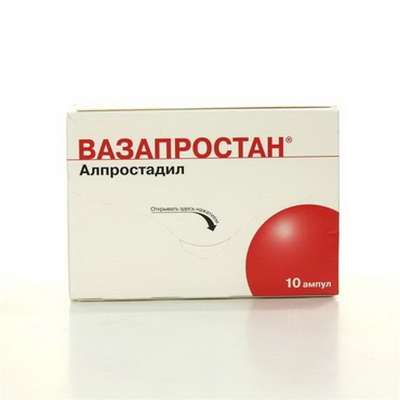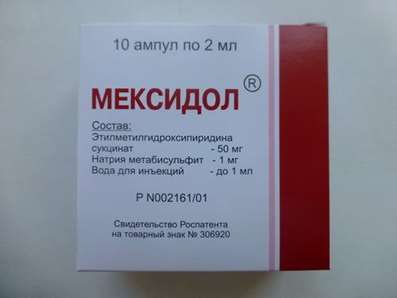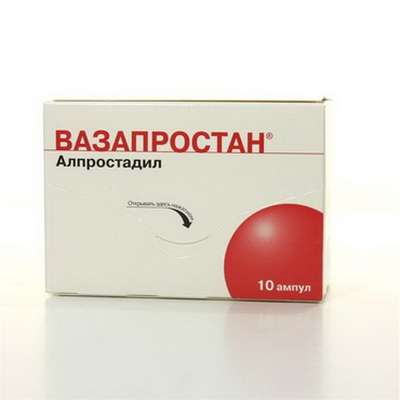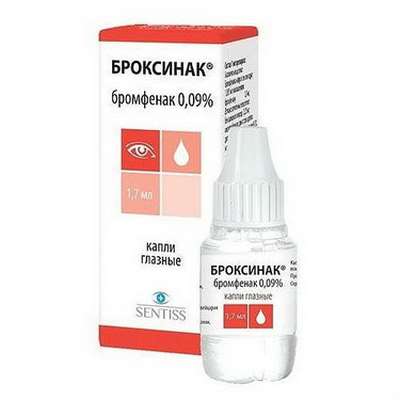Instruction for use: Copaxone-Teva
I want this, give me price
Dosage form: Solution for subcutaneous administration
Active substance: Glatirameri acetas
ATX
L03AX13 Glatiramer acetate
Pharmacological group:
Immunomodulating agent [Other immunomodulators]
The nosological classification (ICD-10)
G35 Multiple Sclerosis: Disseminated Sclerosis; Multiple sclerosis; Recurrent multiple sclerosis; Secondary-progressive multiple sclerosis; Exacerbation of multiple sclerosis; Mixed forms of multiple sclerosis
Composition
Solution for subcutaneous administration 1 ml
active substance: Glatiramer acetate 20 mg
Auxiliary substances: mannitol (mannitol) - 40 mg; Water for injection - q.s. Up to 1 ml
Description of dosage form
Solution: slightly opalescent, from colorless to light yellow in color.
Pharmachologic effect
Mode of action - immunomodulating.
Pharmacodynamics
CopaxoneŽ-Teva (glatiramer acetate) is an acetic acid salt of a mixture of synthetic polypeptides formed by four natural amino acids: L-glutamic acid, L-alanine, L-tyrosine and L-lysine, and has chemical similarity to the basic myelin protein.
Glatiramer acetate alters the course of the pathological process in the demyelinating disease of the central nervous system, multiple sclerosis, which refers to autoimmune diseases that alter the ratio of T suppressors in the body. Glatiramer acetate provides an immunomodulatory effect at the injection site. Its therapeutic effect is mediated through the systemic spread of activated T-suppressors. Glatiramer acetate has a specific mechanism of action, which is based on the ability to competitively replace myelin antigens - myelin basic protein, myelin oligodendrocyte glycoprotein and proteolipid protein at the binding sites with molecules of the main histocompatibility complex of class 2 located on antigen-presenting cells. The consequence of competitive displacement is two reactions: stimulation of antigen-specific suppressor T-lymphocytes (Th2-type) and inhibition of antigen-specific effector T-lymphocytes (Th1-type). Activated T-suppressor lymphocytes enter the systemic circulation and penetrate the CNS. When entering the site of inflammation in the central nervous system, these T-lymphocytes are reactivated with myelin antigens, which leads to the production of anti-inflammatory cytokines (including IL-4, IL-6, IL-10). These cytokines reduce local inflammation by suppressing the local inflammatory T cell response, which leads to the accumulation of specific anti-inflammatory Th2-type cells and inhibition of the pro-inflammatory system of Th1 cells.
In addition, glatiramer acetate stimulates the synthesis of the neurotrophic factor by Th2 cells and protects the brain structures from damage (neuroprotective effect). Glatiramer acetate does not have a generalized effect on the main links of normal immune reactions of the body, which fundamentally distinguishes it from nonspecific immunomodulators, including interferon-beta preparations. The resulting antibodies to glatiramer acetate in long-term use do not have a neutralizing effect, which reduces the clinical effect of the drug.
Pharmacokinetics
Due to the peculiarities of the chemical structure of glatiramer acetate, which is a mixture of polypeptides formed by natural amino acids, as well as a low therapeutic dose, the data on pharmacokinetics are only indicative. Based on them, as well as on experimental data, it is believed that after the injection of glatiramer acetate is rapidly hydrolyzed at the injection site. Hydrolysis products, as well as a small part of unchanged glatiramer acetate, can enter the lymphatic system and partially reach the vascular bed. The determined concentration of glatiramer acetate or its metabolites is not correlated with the therapeutic effect.
Indications of the CopaxoneŽ-Teva
Clinically isolated syndrome (the only clinical episode of demyelination that suggests multiple sclerosis) with the severity of the inflammatory process, requiring the use of intravenous corticosteroids (to slow the transition to clinically significant multiple sclerosis);
Relapsing-remitting multiple sclerosis (to reduce the frequency of exacerbations, slow the development of disabling complications).
Contraindications
Hypersensitivity to glatiramer acetate or mannitol;
pregnancy;
Children under 18 years of age (efficacy and safety not studied).
With caution: predisposition to the development of allergic reactions; cardiovascular diseases; Impaired renal function.
Application in pregnancy and breastfeeding
Data on the use of glatiramer acetate during pregnancy are not available, the possible risk of such use during pregnancy is not established. CopaxoneŽ-Teva is contraindicated during pregnancy.
During treatment with Copaxone-Teva, reliable contraceptive methods should be used.
It is not known whether glatiramer acetate is excreted in breast milk, therefore, when it is necessary to use during lactation, the expected benefit of therapy for the mother and the potential risk for the child should be assessed.
Side effects
CopaxoneŽ-Teva is safe and well tolerated by patients. In some cases, the following adverse reactions may occur.
On the part of the blood and lymphatic system: lymphadenopathy, leukocytosis, leukopenia, splenomegaly, thrombocytopenia, changes in the structure of lymphocytes.
On the part of the immune system: a hypersensitivity reaction, anaphylactoid reaction, angioedema.
From the endocrine system: hyperthyroidism.
From the metabolism: anorexia, weight gain, alcohol intolerance, gout, hyperlipidemia, hypernatremia, a decrease in serum ferritin concentration.
From the nervous system: headache, anxiety, depression, euphoria, nervousness, pathological dreams, psychosis, hallucinations, hostility, mania, personality disorder, suicidal behavior, taste perversion, migraine, syncope, tunnel syndrome, cognitive disorders, tremors, convulsions, Dysgraphy, dyslexia, motor function impairment, myoclonus, neuritis, neuromuscular blockade, paralysis, incl. Fibular nerve, stupor.
From the side of the organ of vision: diplopia, visual field defect, eye movement disorder, cataract, corneal damage, dryness of sclera and cornea, subconjunctival hemorrhage, age ptosis, mydriasis, nystagmus, optic nerve atrophy, visual impairment.
From the side of the organ of hearing and balance: headache, hearing loss.
From the CVS: palpitation, tachycardia, extrasystole, sinus bradycardia, paroxysmal tachycardia, increased blood pressure, varicose veins.
On the part of the respiratory system: cough, shortness of breath, seasonal rhinitis, apnea, hyperventilation of the lungs, laryngospasm.
On the part of the digestive system: nausea, vomiting, edema of the tongue, constipation, caries, odontogenic periostitis, salivary gland enlargement, dyspepsia, dysphagia, belching, esophageal ulcer, colitis, enterocolitis, polyposis of the colon, anorectal disorders, rectal bleeding.
From the liver and bile ducts: gallstone disease, hepatomegaly.
From the skin and subcutaneous tissues: ecchymosis, hyperhidrosis, skin rash, itching, urticaria, contact dermatitis, erythema nodosum, cutaneous nodules.
From the musculoskeletal system and connective tissue: arthralgia, pain in the cervical spine, back pain, arthritis, bursitis, sore, muscular atrophy, osteoarthritis.
From the urinary system: an imperative urge to urinate, pollakiuria, urine retention, hematuria, nephrolithiasis.
From the genitals and mammary glands: amenorrhea, breast enlargement, erectile dysfunction, prolapse of pelvic organs, deviation of laboratory parameters in smears from the cervical canal, violation of the menstrual cycle, vulvovaginal disorders.
Infections: otitis media, bronchitis, gastroenteritis, exacerbation of diseases caused by Herpes simplex, rhinitis, vaginal candidiasis, inflammation of subcutaneous fat, furunculosis, pyelonephritis, herpes zoster.
Other: reactions immediately after injection *, asthenia, fatigue, chills, fever, nasal bleeding, peripheral edema, hangover condition.
* Reactions immediately after injection: local reactions - pain, redness, swelling, abscess, hematoma, lipoatrophy, skin necrosis; Systemic reactions - hot flushes, chest pain, palpitation, anxiety, shortness of breath, difficulty swallowing, hives. These symptoms are temporary and limited and do not require special intervention; They may also begin several months after the initiation of therapy, the patient may experience one or the other symptom occasionally.
Interaction
The interaction between glatiramer acetate and other drugs has not been adequately studied. No drug interaction was found, including simultaneous use of glatiramer acetate with drugs that are used for the treatment of multiple sclerosis, incl. With GCS (with combined use for up to 28 days). Very rarely the frequency of local reactions can increase.
Dosing and Administration
SC.
Injections of 20 mg of CopaxoneŽ-Teva (1 syringe filled with injection for injection) once a day, preferably at the same time of day. Treatment is long. The decision to discontinue therapy should be made by the attending physician.
Each syringe with CopaxoneŽ-Teva is for single use only.
Recommendations for patients on the use of the drug
1. Ensure that you have everything you need for the injection: a disposable syringe filled with KopaksonŽ-Teva solution, a container for used syringes, a cotton swab moistened with alcohol.
2. Before injection, remove the disposable syringe from the outline of the outline package, removing the protective paper strip.
3. Withdraw syringe with solution at room temperature for at least 20 minutes.
4. Before applying CopaxoneŽ-Teva, wash your hands thoroughly with soap and water.
5. Inspect the solution carefully in a syringe. In the presence of suspended particles or changes in the color of the solution, it should not be used.
6. Choose a place for injection. Possible areas for injection: arms, hips, buttocks, stomach (about 5 cm around the navel). Do not inject into painful areas, discolored, reddened areas of skin or areas with seals and nodules. Choosing a new place can reduce discomfort and pain during the injection. Within each injection zone, there is enough room for several injections. It is recommended to draw up a scheme of injection sites and have it with you. For injections into the buttocks and hands, the patient will need the help of another person.
7. Remove the protective cap from the needle.
8. Pre-treating the injection site with a cotton wool soaked in alcohol, lightly fold the skin into the fold with the thumb and forefinger.
9. With the syringe needle perpendicular to the injection site, pierce the skin and, evenly pressing the syringe onto the plunger, insert its contents into the injection site.
10. Remove the needle by moving the syringe perpendicular to the injection site.
11. Place the syringe in a container for used syringes.
If you miss the introduction of CopaxoneŽ-Teva, you must inject immediately, as soon as you remember it. Do not administer a double dose of the drug. The next syringe with CopaxoneŽ-Teva should be used only after 24 hours.
Overdose
Data on the overdose of CopaxoneŽ-Teva is not available. In case of an overdose, careful monitoring and symptomatic treatment are indicated.
Special instructions
At the beginning of the CopaxoneŽ-Teva treatment, a neurologist and a doctor with experience in the management of multiple sclerosis should be monitored.
Patients should be informed of the possible occurrence of adverse reactions, incl. Arising immediately after the injection of CopaxoneŽ-Teva. Most of these symptoms are brief, spontaneously resolved without consequences. If serious adverse reactions develop, discontinue therapy immediately and consult your doctor or call an ambulance. The decision to use symptomatic therapy is taken by a doctor.
Pain in the chest that occurs immediately after injections (see "Side effects"), as a rule, is transient, lasts for several minutes, has no connection with other symptoms, passes by itself without any clinical consequences. The mechanism of development of this symptom is unclear.
With long-term use (for several months) of CopaxoneŽ-Teva at the injection sites, lipoatrophy can develop and in some cases - necrosis of the skin. In order to prevent the development of these local reactions, it is necessary to recommend the patient strictly observe the sequence of injection sites according to a scheme in which a mandatory daily change in the site for injection should be provided.
Patients with impaired renal function or cardiovascular disease should be under the supervision of a physician.
Due to the fact that CopaxoneŽ-Teva is an immunomodulating drug and is used in the treatment of autoimmune disease-multiple sclerosis, its application may be accompanied by changes in the functions of the immune system, and therefore the state of the patient's immune system should be periodically monitored.
If the patient is unable to store syringes with CopaxoneŽ-Teva in the refrigerator, storage at a temperature of 15-25 ° C, but not more than 1 month, is allowed. If the syringes with the drug were not used for a month and the contour cell package was not opened, then these syringes should be stored in the refrigerator (2-8 ° C).
Influence on the ability to drive vehicles and work with machinery. Based on the available data, there is no need for special precautions for persons driving a vehicle or complex equipment.
Release form
Solution for subcutaneous administration, 20 mg / ml. In a disposable syringe of colorless glass type I (Ph. Eur.) With a plastic piston and rubber sealant of the piston, with a fixed needle protected by a double cap consisting of an inner rubber and outer hard plastic parts, 1 ml. 5 or 7 syringes in a contour squamous PVC packaging. 4 or 6 contour mesh packages in a cardboard bundle.
In-bulk packaging: 7 syringes in PVC contour pack. 24 contour squares in a cardboard box or 4 contour squares in a cardboard bundle without label, 6 cartons in a cardboard box.
In the case of secondary packaging in the territory of the Russian Federation: 4 contour cellular packs in a pack of cardboard for consumer packaging subgroups chrome or chromium-ersatz according to GOST 7933-89 or imported, approved for use in the Russian Federation.
Manufacturer
1. Teva Pharmaceutical Enterprises Ltd., 18 Eli Hurwitz St., Ind. Zoon, Kfar Saba 44102, Israel.
2. Ayvex Pharmaceuticals Yukei, Aston Lane North, Whitehouse Vale Industrial Estate, Preston Brook, Runcorn, Cheshire WA7 3FA, United Kingdom.
The owner of the registration certificate: Teva Pharmaceutical Enterprises Ltd., Israel.
Conditions of supply of pharmacies
On prescription.
SC-COP-INFblock-290914-MEDIA-700-280915
Storage conditions of the drug CopaxoneŽ-Teva
In the dark place at a temperature of 2-8 ° C (do not freeze).
Keep out of the reach of children.
Shelf life of the drug CopaxoneŽ-Teva
2 years.
Do not use after the expiry date printed on the package.

 Cart
Cart





